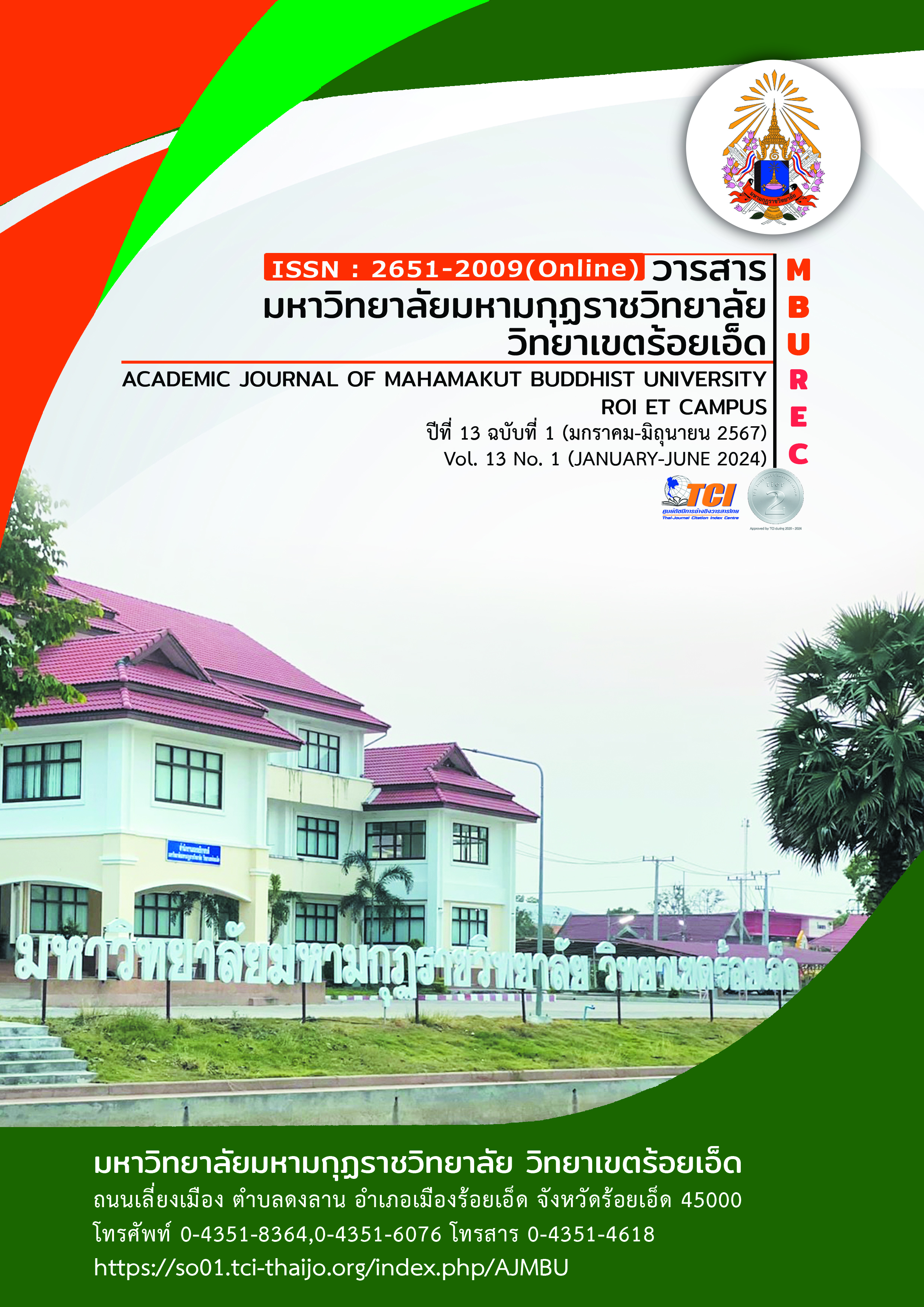AEW LAO WIANG: THE CREATION OF ISAN FOLK DANCING THAT COMES FROM THE DANCE CULTURE OF THE LAO WIANG TRIBAL GROUP, LOM NAKHON RATCHASIMA
Main Article Content
Abstract
Aew Lao Wiang conducted qualitative research focused on the creation of Isan traditional dance, starting with the dance culture of the Lao Wiang sample group in Na khon Ratchasima. The study had two main objectives: 1) to educate and learn about the academic and dance teachings of the Lao Wiang sample group, and 2) to spread awareness of traditional Lao Wiang tribal dance culture by studying dissemination documents in the field, using a random selection method. The sample group consisted of 5 experts, 6 practitioners, and 20 general people who were interviewed in-depth, using surveys, non-participant observations, structured and unstructured interview forms. The data analysis results were presented using a descriptive analysis method.
The study found that the Lao Wiang ethnic group's dance culture has been handed down through generations, as demonstrated by historical documents and mural paintings of Wat Na Phra That. Despite differences in language, dress, and occupation, the Heet 12 traditional dance culture remains a crucial part of their cultural adaptation. The researcher used Suraphon Wirunrak's concept of artificial dance, along with cultural capital and related theories such as cultural integration, creative, and aesthetic theories, to design and create a contemporary Isan folk dance that showcases the identity of the Lao Wiang community. The dance aims to continue the legacy of their dance culture by creating valuable cultural and ethnic identity for future generations to inherit and cherish as part of their heritage.
Article Details

This work is licensed under a Creative Commons Attribution-NonCommercial-NoDerivatives 4.0 International License.
References
เจ้าพระยา ทิพากรวงศ์มหาโกษาธิบดี. (2547). พระราชพงศาวดารกรุงรัตนโกสินทร์ รัชกาลที่ 3. กรุงเทพมหานคร : กรมศิลปากร.
ชลาลัยวงศ์อารีย์. (2562). สัญวิทยาแห่งตัวละครหญิงในงานนาฏยศิลป์ร่วมสมัยของนราพงษ์ จรัสศรี. กรุงเทพมหานคร : จุฬาลงกรณ์มหาวิทยาลัย.
ดิเรก ปัทมสิริวัฒน และคนอื่นๆ. (2547). การสำรวจสถานะองค์วามรู้และแนวทางการพัฒนา. พิษณุโลก : คณะวิทยาการจัดการและสารสนเทศศาสตร์ มหาวิทยาลัยนเรศวร.
ธรากร จันทนะสาโร. (2557). นาฏยศิลป์จากแนวคิดไตรลักษณ์ในพระพุทธศาสนา. กรุงเทพมหานคร : คณะศิลปกรรมศาสตร์ จุฬาลงกรณ์มหาวิทยาลัย.
บุนทะนอง ซมไซผน. (2551). เอกสารประกอบการประชุมสัมมนา “งอยแคมของส่องเพลงลาว-ไทย” – เส้น คู่ขนาน : เพลง 3 ประเภท บน 2 ฝั่งโขง (กรณีลาว-ไทย) และเกณฑ์การตัดสินเพลงและดนตรีหรือ A Parallel : Three Types of Songs on the Two Branches of Mekong River (Laos-Thailand Case) and the Music and. มหาสารคาม : มหาวิทยาลัยมหาสารคาม.
ปิ่นเกศ วัชรปาณี. (2559). การสร้างสรรค์ผลงานนาฏศิลป์. อุดรธานี : มหาวิทยาลัยราชภัฏอุดรธานี.
พีรพงศ์ เสนไสย. (2557). โครงงาน “หนึ่งคณะหนึ่งศิลปวัฒนธรรม” เรื่อง นาฏยประดิษฐ์อีสาน. มหาสารคาม : คณะศิลปกรรมศาสตร์ มหาวิทยาลัยมหาสารคาม.
พีระพันลูกท้าว. (2560). เอกสารประกอบการสอนวิชานาฏยศิลป์ร่วมสมัย (Contemporary Dance). มหาสารคาม : ภาควิชาศิลปะการแสดง คณะศิลปกรรมศาสตร์ มหาวิทยาลัยมหาสารคาม.
สุรพลวิรุฬห์รักษ์. (2547). หลักการแสดงนาฏยศิลป์ ปริทรรศน์. กรุงเทพมหานคร : สำนักพิมพ์แห่งจุฬาลงกรณ์.
อรศิริ ปาณินท์. (2554). การปรับตัวในบริบทใหญ่ที่แตกต่างของกลุ่มชาติพันธุ์ไท-ลาว ในพื้นที่ลุ่มน้ำภาคกลาง. กรุงเทพมหานคร : คณะสถาปัตยกรรมศาสตร์ มหาวิทยาลัยเกษตรศาสตร์.
อารีย์ สุทธิพันธุ์. (2533). ประสบการณ์สุนทรียะ. กรุงเทพมหานคร : แสงศิลป์การพิมพ์.
Field Enterprises Education Corporation. (1971).Folk Dance.The World Book Encyclopedia. 7(12). 180.
Noisette Philippe. (2011). Talk about Contemporary Dance. Paris : Flammarion.


